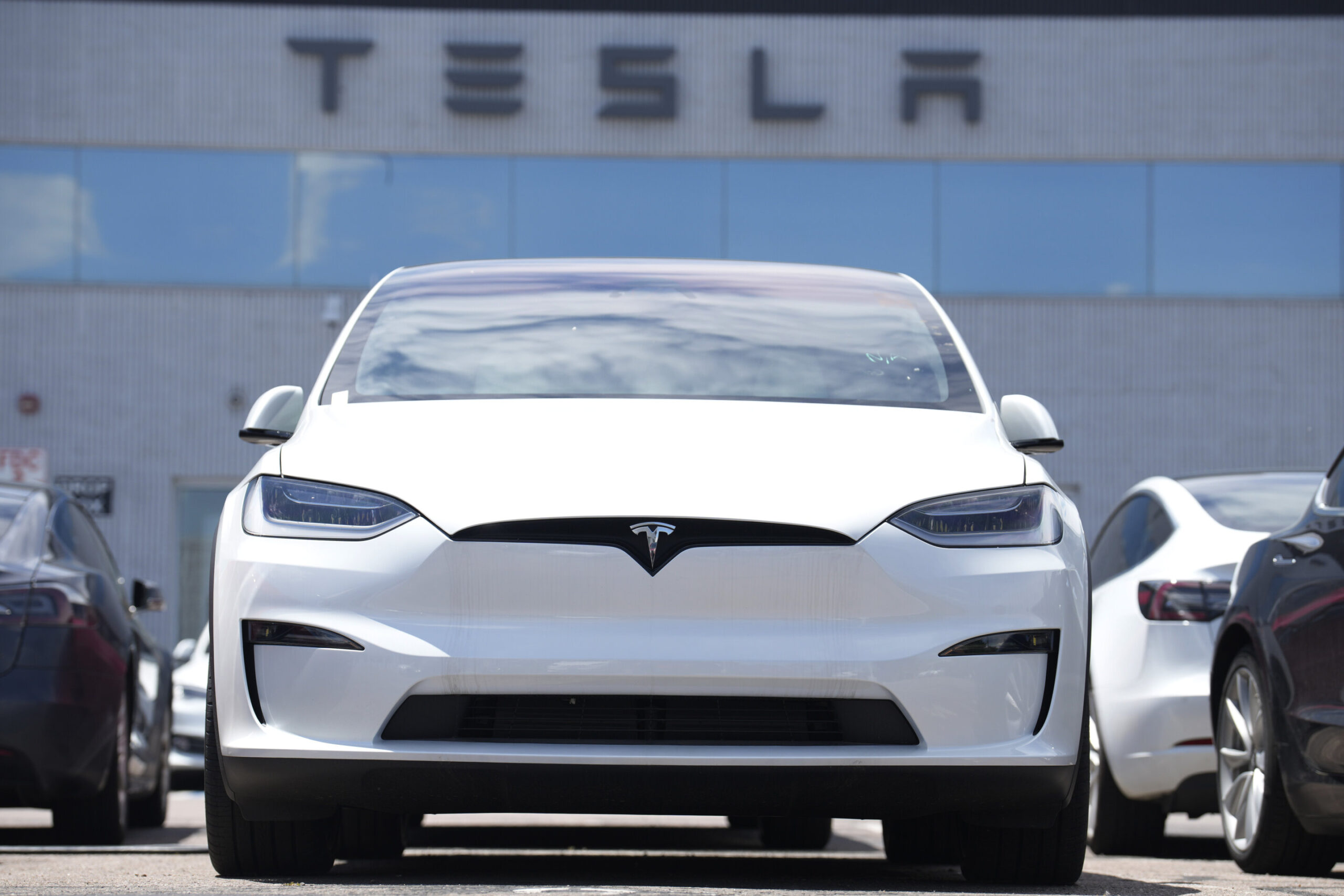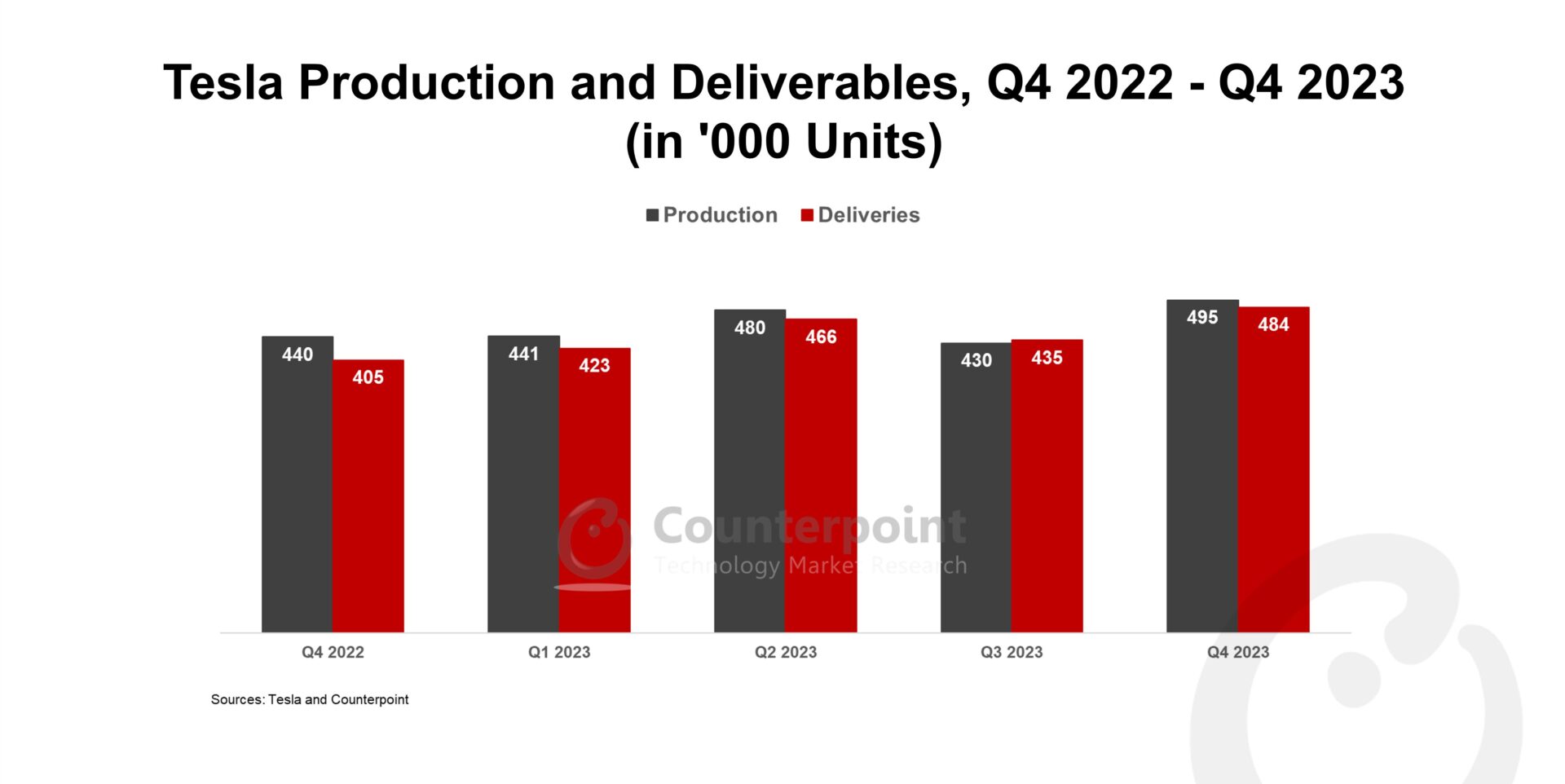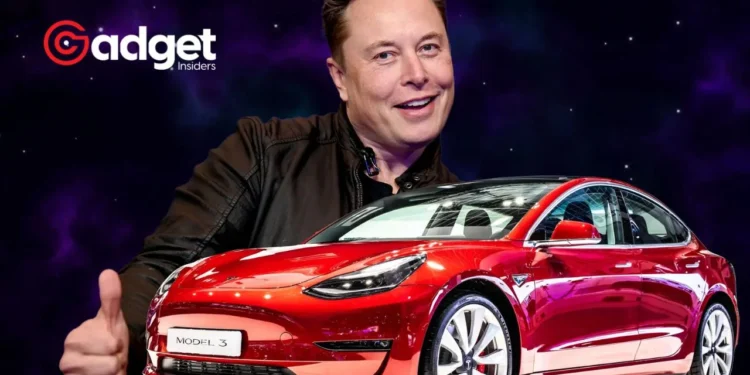As the dawn of 2024 unfolds, the electric vehicle (EV) landscape is witnessing a seismic shift, with Tesla, once the unchallenged titan of the industry, grappling with an unforeseen downturn in its dominion. The recent revelation of Tesla’s significant drop in car sales marks a pivotal moment, reflecting not only the intensification of competition but also the myriad challenges the EV giant is facing.

Tesla’s Unsettling Sales Downturn
In what can only be described as a stunning development, the EV giant disclosed a marked decline in its vehicle deliveries, managing to distribute only 386,810 vehicles in the first quarter of the year, an 8.5% dip compared to the same period last year.
This downturn is attributed to several factors, including the transition to the updated Model 3 sedan at its Fremont, California, production facility, which played a considerable role in the decline.
Further complicating matters, Tesla’s operations were disrupted by unforeseen circumstances, including shipping diversions in the Red Sea and a destructive arson attack that crippled its German factory’s power supply. These events underscore the vulnerability of global manufacturing operations to geopolitical and malicious disruptions.
On Tuesday, electric vehicle giant Tesla reported 386,810 vehicle deliveries in the first quarter, which is 8.5% lower than the same period last year. It's the company's first year-over-year decline since 2020.https://t.co/JBe0fAp7dR
— Entrepreneur (@Entrepreneur) April 2, 2024
In an aggressive response to the mounting pressure, Tesla took the bold step of slashing prices across its model range, with reductions reaching as much as $20,000 on some variants. A temporary $1,000 discount on the Model Y, Tesla’s flagship model, was also implemented in March, raising eyebrows among investors concerned about the impact on profit margins.
This downturn marks the first significant sales decline for the company since 2020, raising alarms and setting the stage for a year of “notably lower” sales growth, as per the company’s forecasts. Positioned between the anticipated launch of the Model 2 and the global expansion of Models 3 and Y, the brand finds itself at a critical juncture.
The Competitive Horizon
The landscape of the EV market is rapidly evolving, with new entrants like Xiaomi and industry stalwarts such as BMW unveiling compelling alternatives to Tesla’s offerings. Xiaomi’s SU7 EV Sedan, with a starting price of $29,870, witnessed a staggering 88,898 pre-orders on its debut day, highlighting the appetite for competitive EV options.
Meanwhile, BMW’s Vision Neue Klasse X promises to redefine electric mobility with its advanced technologies, directly challenging the company’s market position.
The Path Forward for Tesla
the EV giant’s journey ahead is fraught with challenges. The company’s reliance on the aging Model 3 and Model Y lineup, coupled with the delayed introduction of a more affordable $25,000 EV model, places it at a crossroads.
Tesla’s innovative spirit, which once captivated the world with the unveiling of the Cybertruck, now faces the daunting task of reinvigorating its lineup and reclaiming its position as the leader in electric mobility.

Elon Musk, Tesla’s visionary leader, has yet to delineate a clear strategy for propelling the company forward amid these challenges. His controversial public persona and political stances have also alienated a segment of Tesla’s potential consumer base, adding another layer of complexity to the company’s path to recovery.
Tesla’s current predicament serves as a vivid reminder of the relentless pace of innovation and competition in the EV industry. As the company navigates through these turbulent waters, its ability to adapt and innovate will be critical in determining its future.
With the electric vehicle revolution gaining momentum, Tesla’s journey will be closely watched by enthusiasts and critics alike, marking a new chapter in the saga of electric mobility.










